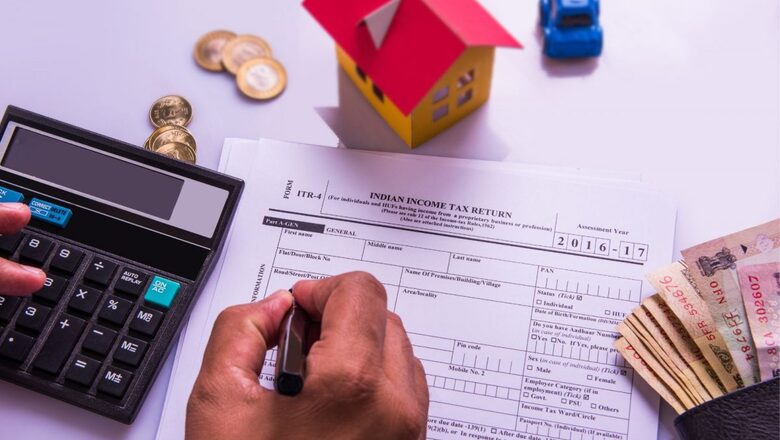
views
ITR Filing AY 2022-23: There are only two days left to file your income tax returns for the assessment year 2022-23, and the income tax department has been urging taxpayers to file ITR within the due date. The due date to file ITR is July 31, which is Sunday. Taxpayers only have Saturday and Sunday in hand to complete this important work, as the government and the I-T Department seem to be in no mood to extend the ITR filing due date. As of July 29, 4.52 crore people have filed their ITRs, as per the income tax e-filing website.
Over 4.09 crore ITRs filed till 28th July, 2022 & more than 36 lakh ITRs filed on 28th July, 2022 itself.The due date to file ITR for AY 2022-23 is 31st July, 2022.Please file your ITR now, if not filed as yet. Avoid late fee.Pl visit: https://t.co/GYvO3n9wMf#ITR #FileNow pic.twitter.com/p0ABBuoZ6r— Income Tax India (@IncomeTaxIndia) July 29, 2022
Taxpayers can file their both online (without downloading any form or utility) and offline (downloading form or utility and then uploading it on the new income tax portal). However, in both cases, the individual needs to furnish a certain set of documents, depending on the ITR form.
ITR Filing: 10 Documents You Need to File Income Tax Return
i. Form 16: Form 16 is a tax deducted at source (TDS) certificate issued to an employee by his or her employer that provides details of the salary paid, taxes deducted and deposited during the span of the relevant financial year.
ii. Other TDS Certificates: Individuals also need to furnish form 16A and other TDS certificates as applicable in order to file ITR. Mutual Fund companies and banks issue Form 16A, while form 16C is to be furnished by those who rent their property. Apart from this, people who sell lands are required to collect Form 16B.
iii. Annual Information Statement: Annual Information Statement (AIS) is th comprehensive view of information for a taxpayer displayed in Form 26AS. It shows both reported value and modified value (i.e. value after considering taxpayer feedback) under each section (i.e. TDS, SFT, Other information).
iv. Form 26AS: This is to be downloaded from the new income tax portal and contains tax deduction and deposit details against the taxpayer’s PAN. Form 26AS displays details of property purchases, high-value investments, and TDS/TCS transactions carried out during the financial year.
v. Interest Certificates: Taxpayers must also provide a breakup of the interest income gained from different sources including savings accounts, fixed deposits etc, and must submit interest certificates collected from banks and post offices.
vi. Proof of Tax-saving Investment, Expenditure: Tax saving investment and expenditure can be claimed under the old tax regime, and it is important to submit proofs of the same.
vii. Unlisted Share Investment Proof: You have to disclose information if you have held unlisted shares for the relevant financial year, and file ITR-2 to do the same. Company details, amount invested and amount received are some of the things that need to be disclosed under this.
viii. Capital Gains Earned: Capital gains by selling properties, mutual funds or shares have to be declared through ITR-2 or 3 as applicable, and details of each investment need to be provided.
ix. Aadhaar Number: Taxpayers need to quote their Aadhaar numbers while filing ITR under Section 139AA of the Income-tax Act, 1961.
x. Bank Details: It is compulsory to provide all bank account details during ITR filing, even if the account was closed during the relevant financial year.
Read all the Latest News and Breaking News here




















Comments
0 comment